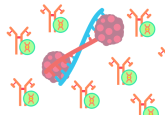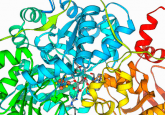New methodology for drug screening shows promise in the detection of drugs of abuse

Researchers at McMaster University (ON, USA) have proposed a new methodology for drug screening. This novel technique could lead to the rapid and accurate identification of fentanyl, as well as a vast number of other drugs of abuse, which have previously been difficult to detect by traditional urine tests.
The method, published in Analytical Chemistry, would eliminate the current two-stage process, enabling multiple high throughput tests at once. This would drastically reduce processing time whilst improving accuracy and quality assurance. Another benefit of the new proposed mass spectrometric method is that it could be utilized to screen for a wider range of drugs of abuse, as well as identify designer drugs that elude conventional tests.
Conventional tests utilizing immunoassays cannot detect the vast assortment of drugs including; synthetic opioids, tranquilizers, stimulants and anti-anxiety agents. Further tests are required to confirm results, due to a high rate of false positives and false negatives, slowing the current process down.
Phillip Britz-McKibbin, a professor in the Department of Chemistry and Chemical Biology at McMaster University explained: “Drug testing is always behind the times since screening relies on antibody reagents that target only known drugs and they are prone to error, which contributes to higher health care costs and delays to clinical decision making.
“Current technologies are not specific, accurate nor comprehensive enough, which impairs a physician’s ability to properly care for patients, such as monitoring for drug compliance, potential substitution or polydrug usage.”
Researchers plan to validate the method relative to conventional screening tests for a broad spectrum of drugs of abuse on a cohort of in-patients, who are currently under physician care.
Sources: DiBattista A, Rampersaud D, Lee H, Kim M, Britz-McKibbin P. High throughput screening method for systematic surveillance of drugs of abuse by multisegment injection–capillary electrophoresis–mass spectrometry. Anal. Chem. 89(21), 11853–11861 (2017); www.sciencedaily.com/releases/2017/11/171103155212.htm






